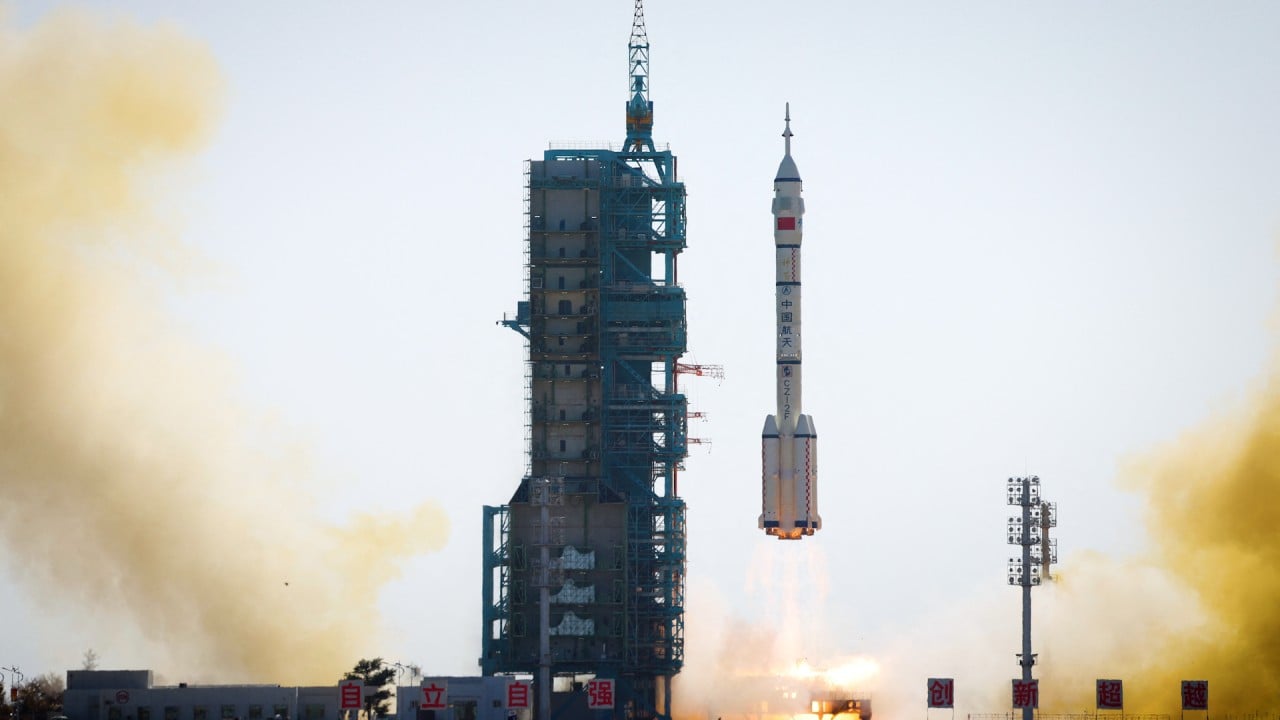
‘Good to be home,’ Chinese astronauts say after landing with hole in parachute
- Sizeable tear spotted in canopy as Shenzhou 16 mission returns to Earth with its three-man crew after 154 days on board space station
- China’s space authorities have not publicly commented on the mishap but if confirmed it would be crewed programme’s most severe incident
A notable amount of blue sky was visible through the hole, near the centre of the canopy, as it descended to the Dongfeng landing site with its three passengers who had just spent 154 days in space.
Space programme historian and astronomer Jonathan McDowell from Harvard University said on Wednesday that one possibility was that venting propellant had burnt a hole in the parachute. It could also be a manufacturing defect, he added.
“The trouble with a hole is that it can get bigger. The tear in the fabric can rip apart, so the parachute won’t work any more.”

The tear did not appear to worsen in the remaining minutes of the descent and the crew – which included China’s first civilian astronauts to take part in a space mission – touched down at 8.11am. The capsule was seen to bounce and roll along the ground several times on landing.
“It feels good to be home,” Commander Jing Haipeng told state broadcaster CCTV after on-site medical checks confirmed that he and his crew – civilians Zhu Yangzhu and Gui Haichao – were in sound physical condition. The trio were flown to Beijing later that day.
Chinese space authorities, who declared the mission a complete success, have not yet publicly addressed the parachute issue, although word of the fault is spreading among the space community.
If confirmed, it could be one of the crewed space programme’s most severe safety incidents and a thorough investigation is expected. “Some institutes will have to work during the Spring Festival holiday,” one social media user commented.
The most serious previous incident occurred in 2014, when Nasa’s Low-Density Supersonic Decelerator suffered a major parachute failure as it was descending to the Pacific Ocean.
China has taken an extremely cautious approach to space flights, especially when astronauts are on board. The Chinese space shuttle programme was scrapped in its infancy, partly over safety concerns.
Since China’s first crewed flight in 2003, the programme has maintained a perfect safety record. And parachute re-entry, while old-fashioned, is considered the most reliable method of returning astronauts to Earth.
Lin Ruling, a technician with the China Academy of Space Technology, a major spacecraft developer responsible for all of the Shenzhou missions’ main parachutes, said each one is nearly 40 metres (131 feet) in diameter.
With a total area of 1,200 square metres (3,940 sq ft), each parachute is big enough to cover three basketball courts when fully deployed, Lin told the China Youth Daily newspaper on Tuesday.
Despite its size, the entire parachute weighs less than 100kg (220 lbs) and can fit into an average refrigerator. All of the parachutes are hand-sewn and extremely thin, but are capable of bearing an impact up to 100 times’ stronger than Earth’s gravity, he said.
“The manufacturing process involves more than 100 steps and the material will be carefully examined by an inspector before work starts,” Lin said.
The parachute is connected to the capsule by 96 ropes, each 2.5mm thick, and is designed to gradually reduce its speed from 180 metres per second (591ft/s) to 7m/s (11.6ft/s) after unfurling 10km (6 miles) above the ground.
The article noted that the parachute has so far delivered 16 Shenzhou spacecraft and 29 astronauts.
The Shenzhou 16 crew, who arrived at the Tiangong space station in May, conducted a wide range of scientific experiments, delivered a science outreach lesson, and carried out an eight-hour spacewalk during the mission.
A team from the Nanjing University of Aeronautics and Astronautics recently used a material failure model to simulate the damage that could be caused to supersonic parachutes in the inflation process.
In a study published this month by the Chinese Journal of Aeronautics, the researchers found that a parachute 22 metres (72ft) in diameter would be able to cope with a small hole near the top while descending at a speed lower than Mach 1.7, or 580m/s (1,900ft/s).
According to the study, the parachute in these conditions would maintain its shape and the hole would not spread.



